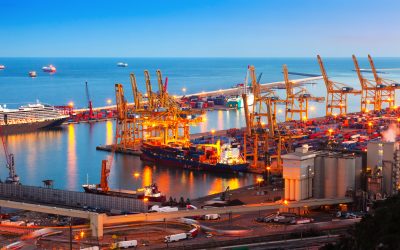There is no debate in saying that the benefits of international sourcing are endless. Manufacturing capabilities that sometimes are unavailable domestically and availability to cutting-edge technologies that exist in certain markets make international sourcing a wise choice.
However, with great opportunities come great risks. Owing to the rapid changes in the global market environment, potential risks and uncertainties are now also part of the game. It is very important that you understand these risks, make a scientific assessment, and then analyze if international sourcing is the right choice for your business.
So what are the common risks and dilemmas? How can organizations minimize these risks and optimize the benefits of international sourcing without jeopardizing their investments and supply chains?
Unexpected Delay in Shipping:
Various factors can cause expected delays in shipping. Shipment delays can pose some of the most serious constraints to business operations. The most common factors include vessel delays, disruption in logistics, as well as lack of coordination of the freight. If you are transporting via sea, be prepared for things like bad weather, shortage of space in the vessel, and port congestion.
Solutions include advanced planning and not relying on the vendor-provided ETA but calculating the expected delivery time yourself. Calculate the probable transit time considering the possible delay factors such as weather conditions, holidays in various parts of the world and then make a plan based on the evaluated factors. Experts suggest adding at least one week to the expected transit time as a provision to the unexpected delays.
Quality Risks:
Quality assurance remains the biggest concern as you cannot monitor and manage the manufacturing process in a foreign land. If the supplier compromises on product quality, your whole investment can go down the drain. Quality risks can occur due to serval reasons such as lack of communication and misunderstanding. It’s not that suppliers overseas are some fraudsters ready to rob you but it’s often the lack of communication that results in unintended consequences.
One way to evaluate the supplier’s capacity to meet your quality requirements is by asking for a physical product sample prior to placing a real order. Many suppliers volunteer sampling requests as it demonstrates their seriousness and depicts that they are truly up to the task. You can also consider virtual product samples. It can either be a 2D rendered image created in Photoshop or sophisticated 3D product samples that can be tested in a digital environment.
Unexpected Costs
International sourcing is a popular choice because it is cost-effective but there are certain hidden cost factors that you must be prepared for. The most common is the fluctuations in the foreign exchange rate. Moreover, the cost of delays, losses in transit, an unexpected rise in transaction costs, contract management costs, legal discrepancies, and many other factors can contribute to the rising costs of international sourcing.
The best way to counter cost risks to sit with an expert or someone involved in international sourcing and do in-depth research of the suppliers across various locations. Take time and develop a deep understanding of the process and spot all underlying cost risks. Moreover, it’s always wise to spare a margin for unexpected expenses.
BlinkGlobal – Your International Sourcing Partner
It’s wise to partner with a reliable sourcing company as they have import and export agents that have expertise in cost reduction and quality assurance. With our deep understanding of global sourcing, we supply B2B industrial and consumer products with centralized procurement and high delivery precision. BlinkGlobal is ready to help you!




